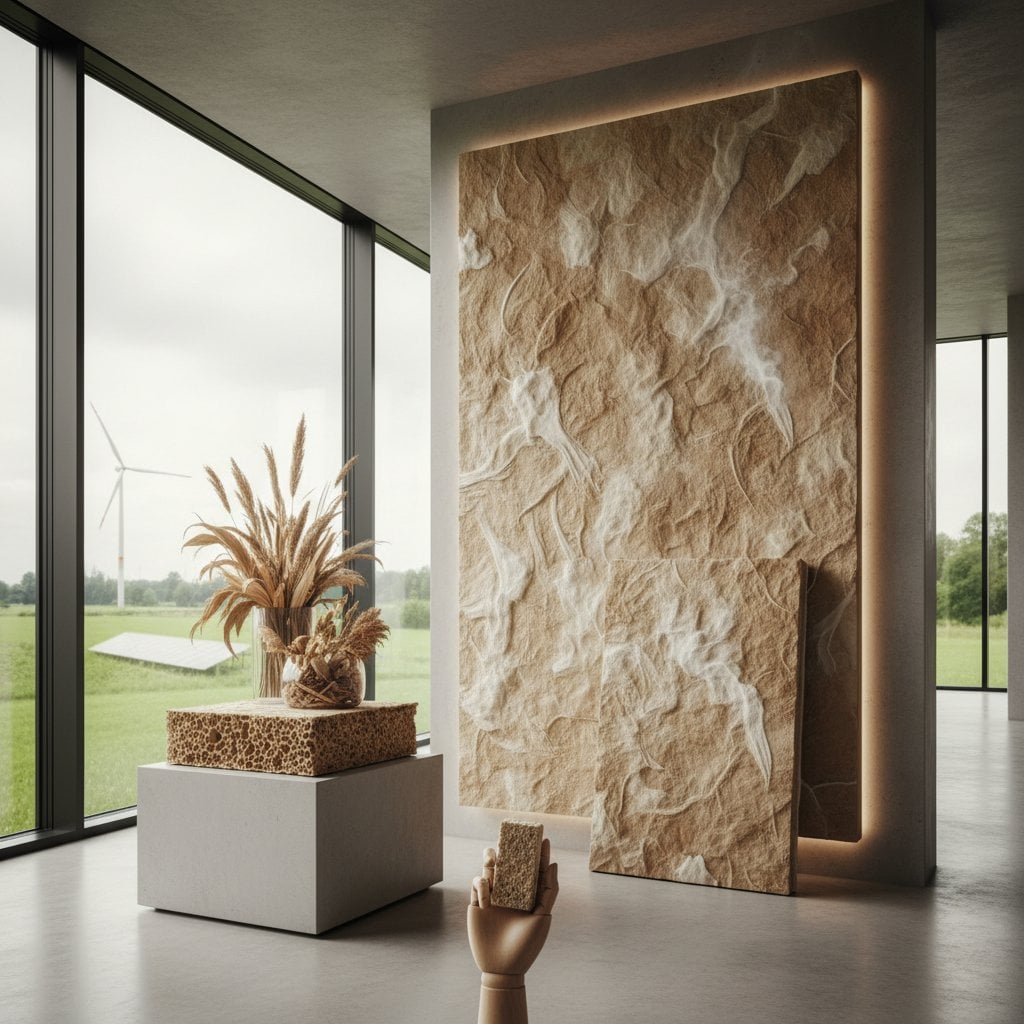Key Points
- Recycled plastic decking emerges as the premier eco-upgrade for homeowners seeking sustainability alongside durability.
- Composite materials, blending recycled plastics and wood fibers, outperform traditional lumber by resisting moisture, fading, and warping.
- These sustainable options lower maintenance costs by up to 60 percent and divert substantial waste from landfills.
- Selecting certified recycled decking advances circular economies and enhances a home's environmental profile over time.
The Rise of Recycled Plastic Decking
Homeowners often face the challenge of creating a durable outdoor space without sacrificing environmental principles. Recycled plastic decking addresses this by transforming waste materials into high-performance surfaces that mimic natural wood. These decks endure harsh weather while minimizing ecological impact, making them ideal for areas with high moisture, temperature swings, or pest issues.
From extensive field experience, professionals observe that this material integrates seamlessly into modern landscapes. It offers longevity and aesthetic appeal, turning backyards into resilient, eco-friendly retreats.
Limitations of Traditional Decking
Standard wood decks, despite treatments like sealing or pressure processes, degrade rapidly under environmental stress. In humid areas, they swell and rot; in arid zones, they crack and splinter. Routine upkeep, including sanding and staining every few years, demands significant time and expense.
Moreover, conventional wood contributes to deforestation unless sourced responsibly. The production process incurs carbon emissions from harvesting, processing, and shipping. Recycled plastic decking counters these issues by repurposing existing materials, thereby reducing overall environmental harm.
Composition and Manufacturing Process
Recycled plastic decking typically merges polyethylene or polypropylene from post-consumer sources with wood fibers from reclaimed scraps. This combination yields a dense, water-repellent product that replicates wood's texture and appearance. Advanced formulations incorporate up to 100 percent recycled content, sourced from items like bottles and packaging.
Manufacturers extrude the mixture under controlled heat and pressure to ensure uniform sizing and color retention. Additives such as UV protectors and non-slip agents enhance safety and durability. The final boards require no chemical preservatives, resisting stains, fading, and biological decay effectively.
Core Benefits for Environment and Performance
Homeowners grappling with escalating costs find recycled plastic decking a worthwhile investment. Key advantages include:
- Waste Reduction: A typical deck repurposes materials equivalent to 50,000 plastic bags.
- Extended Durability: These surfaces outlast untreated wood by two to three times.
- Simplified Upkeep: Cleaning involves only soap and water; no sealing or staining is necessary.
- Enhanced Safety: Textured surfaces prevent slips, and uniform strength minimizes risks.
- Green Certifications: Products often meet LEED standards, supporting broader sustainability goals.
Environmental scientist Dana Lewis notes, "Every square foot of recycled decking represents a piece of plastic that no longer pollutes waterways or landfills. It is a tangible way for homeowners to take environmental responsibility into their own hands."
Strategies for Optimal Eco-Efficiency
Prior to launching a decking project, evaluate site-specific factors like exposure, drainage, and usage patterns. Success depends on aligning material choices with local conditions.
- Sun and Shade Assessment: Opt for UV-enhanced options in high-sunlight areas to combat fading.
- Drainage Planning: Design the substructure to facilitate water flow and prevent accumulation.
- Fastener Selection: Employ stainless steel screws or concealed clips for enduring, attractive results.
- Expansion Allowance: Account for thermal movement by incorporating appropriate gaps between boards.
- Holistic Integration: Pair the decking with energy-efficient features like solar lights or native plants.
Engage certified installers experienced in composites to avoid performance issues and warranty complications.
Financial Analysis and Value Proposition
Initial expenses for recycled plastic decking range from $8 to $15 per square foot installed, exceeding basic wood at around $5. Over time, savings from minimal maintenance and prolonged service life offset this premium, often within five to seven years.
The environmental gains amplify these benefits. Utilizing one ton of recycled plastic averts approximately 2,000 pounds of carbon emissions compared to new materials, matching several months of average household energy use.
Varieties of Composite Materials
Available formulations cater to diverse needs and climates.
- Plastic-Wood Blends: Provide organic feel and hues, suited to temperate settings.
- Capped Composites: Feature protective outer layers against stains and sun damage, recommended for exposed locations.
- PVC Recycled Options: All-plastic construction excels in wet environments, such as near pools.
Verify credentials like UL Environmental or GreenCircle certifications to ensure genuine recycled content and ethical production.
Aesthetic and Design Flexibility
Contemporary recycled decking dispels notions of unnatural appearance through sophisticated textures and color gradients. Options span warm earth tones to cool neutrals, harmonizing with various architectural styles.
Grooved profiles enable fastener-free installations for seamless visuals. The inherent grip and wood-like touch enhance usability without compromising safety. Architects increasingly incorporate these into both modern and classic projects for their versatility.
Installation Guidelines
Professionals handle complex installations, but skilled DIY enthusiasts can tackle modest areas with appropriate equipment.
Essential Steps:
- Construct a level frame with rust-resistant joists.
- Position joists at 12- to 16-inch intervals per specifications.
- Secure boards using composite-compatible screws or clips.
- Include gaps for expansion and drainage.
- Apply trim for polished edges.
Ongoing Care:
- Perform seasonal washes with mild soap.
- Steer clear of abrasives or high-pressure cleaning.
- Clear debris routinely to maintain integrity.
These practices sustain the deck's condition for decades.
Adapting to Regional Conditions
Performance varies by locale. Capped or PVC types thrive in humid or coastal zones due to moisture barriers. Freeze-thaw rated materials suit cold regions, while UV-stabilized variants protect against desert sun.
Consult local codes, which may mandate recycled content proof for incentives. Compliance ensures smooth project execution.
Health and Safety Advantages
Recycled plastic decking avoids the chemicals in treated wood, such as arsenic or formaldehyde, preventing leaching into soil or water. Its smooth, splinter-resistant surface benefits families with children or pets.
This non-toxic nature proves particularly useful adjacent to gardens or water harvesting setups, safeguarding health and ecosystems.
Emerging Market Directions
Industry consultant Miguel Harper observes, "Recycled decking is no longer a niche market. It represents a fundamental shift toward circular material systems in residential construction." Manufacturers now extend these technologies to railings, fences, and supports.
This evolution aligns with regenerative practices, promoting material reuse over disposal. Homeowners thus join a cycle of sustained resource management.
Advancing Your Outdoor Space
To implement recycled plastic decking, begin with a site assessment, including measurements, climate review, and budget planning. Partner with specialists in green construction for expert guidance.
This choice elevates not only your property but also contributes to reduced waste and preserved resources. The enduring returns in functionality and planetary health make it a prudent, forward-thinking decision.
Common Questions
How long does recycled plastic decking last? Most installations endure 25 to 30 years with basic care. Proper setup and cleaning can prolong this further.
Does it handle extreme weather? Quality products manage temperature extremes through engineered stability. Select variants rated for specific conditions like intense heat or cold.
What maintenance is required? Plan for soap-and-water cleaning a few times yearly, plus regular sweeping and fastener checks. No additional treatments are needed.










